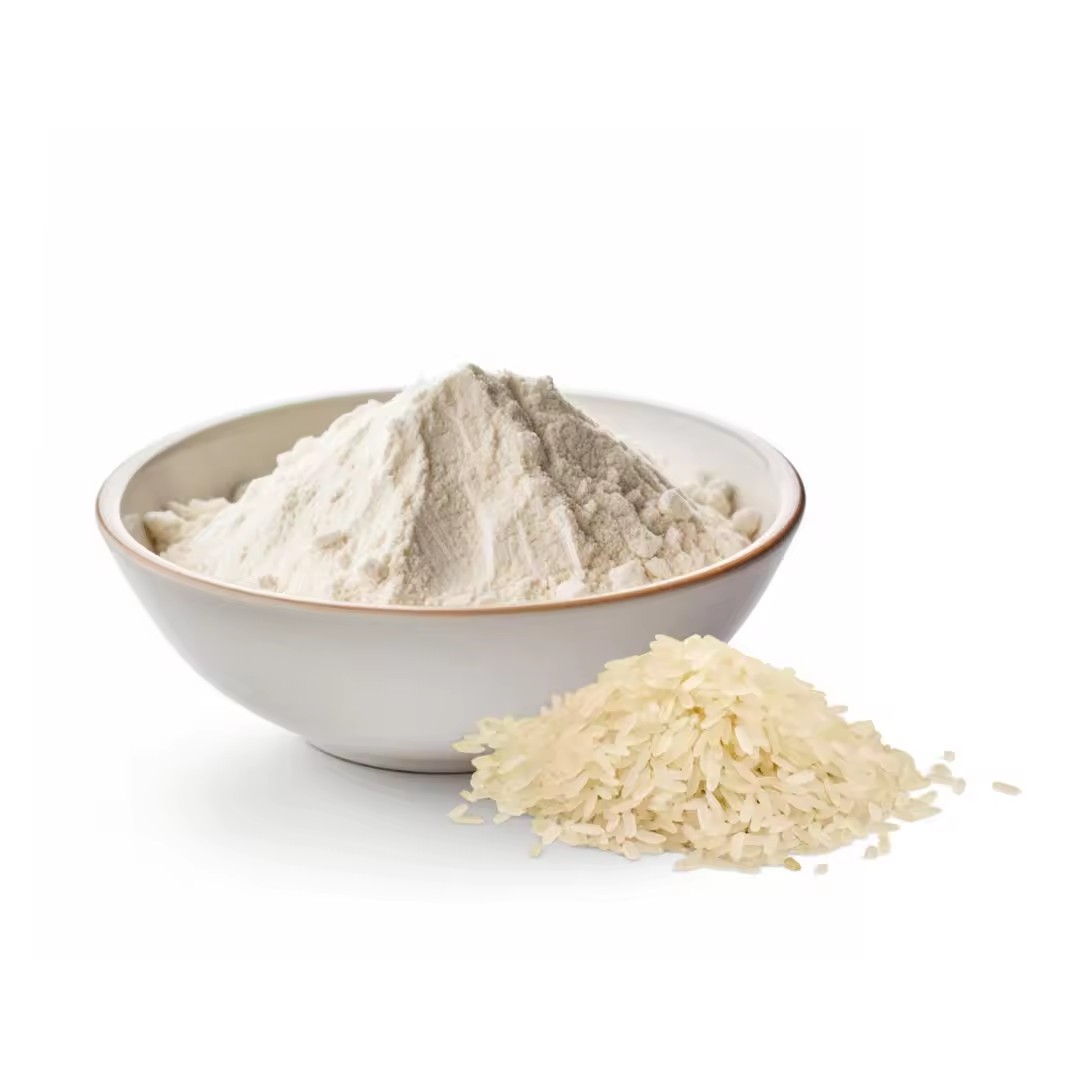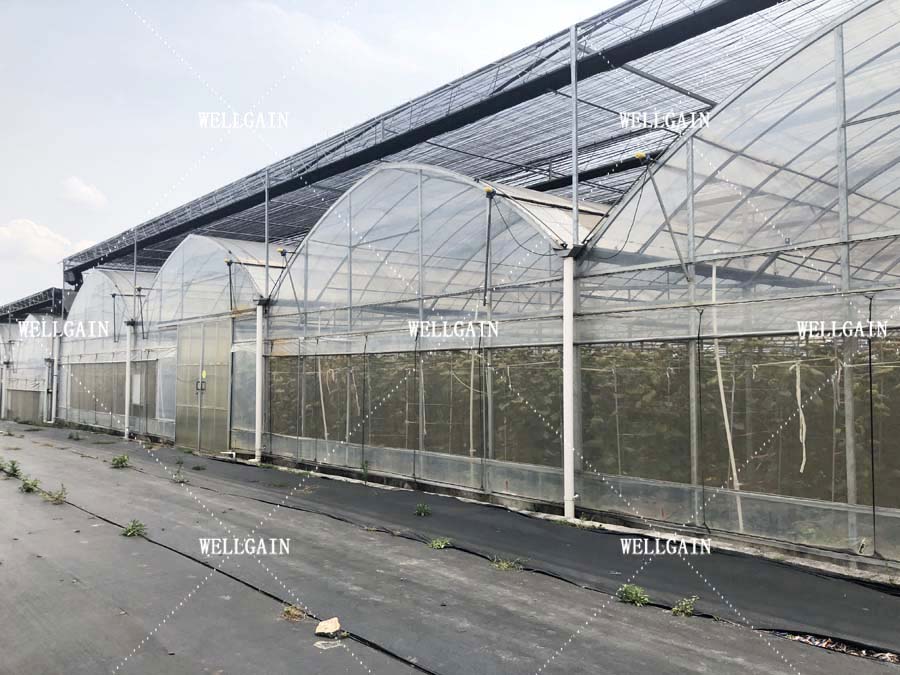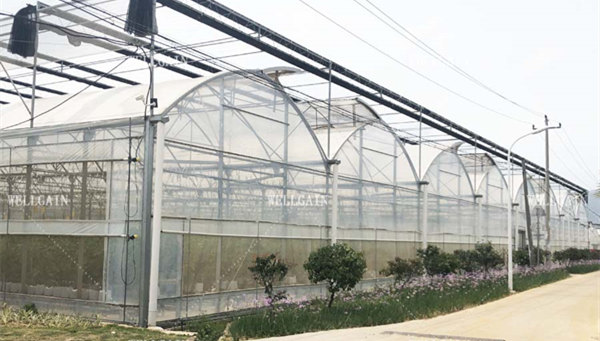Smokeless Korean BBQ Grills: What Every Restaurant Owner Should Know
Smokeless Korean BBQ grills improve air quality and dining experience. A must-read guide for restaurant owners worldwide looking for clean and modern BBQ setups.
Running a Korean BBQ restaurant comes with one big challenge—smoke control. Customers love the flavor and experience of grilling meat at the table, but no one wants to leave a restaurant smelling like smoke. That’s why smokeless Korean BBQ grills are now the go-to solution for restaurant owners around the world.
In this blog, we’ll explain what makes these grills special, how they work, and what you need to know before buying.
What Is a Smokeless Korean BBQ Grill?
A smokeless Korean BBQ grill is specially designed to reduce smoke during grilling. It combines efficient heat sources with a built-in ventilation system to suck away smoke and grease right at the source—before it fills the air.
There are two common types:
- Upper Exhaust System (Korean BBQ Pipe): A stainless steel pipe above each table pulls smoke up and away. It's powerful and a classic design for many Korean BBQ restaurants.
- Under-Table Smoke Purifier: This system is installed below the tabletop and uses suction to collect smoke and oil under the grill. The biggest advantage? It’s hidden—your restaurant looks cleaner and more modern.
You can see how the following setup works.Find more information about our smokeless equipment here
Photo of the installed BBQ pipe

Photo of the installed smoke purifier


Why Go Smokeless?
- Better Customer Experience
- No one likes smoke in their face while eating. A smokeless setup keeps the air clear and comfortable.
- No Smell on Clothes
- Customers can enjoy the BBQ without worrying about smelling like it afterward—great for lunch crowds and families.
- Modern & Clean Look
- Especially with under-table purifiers, your restaurant stays sleek and uncluttered.
- Fire Safety & Grease Control
- These systems help manage grease and reduce fire risks, especially important for busy restaurants.
What to Consider Before Buying
Choose the Right Ventilation StyleDo you want a visible upper pipe, or a hidden system under the table? Both have pros and cons. Consider your restaurant’s style and layout.
- Grill Type Compatibility
- Smokeless systems can work with charcoal, gas, or induction grills. Make sure your setup matches your kitchen’s power source and safety regulations.
- Certifications Matter
- Look for products with international safety certifications like CE, UL, or ETL—especially if you’re buying from overseas.
- Easy Cleaning
- Make sure filters and grease trays are easy to access and clean. This saves time and keeps your restaurant safe.
We Deliver Smokeless Korean BBQ Grills Worldwide
With over 20 years of experience, we help restaurant owners across Asia, Europe, the Middle East, and the Americas create unforgettable BBQ experiences. Whether you're opening a new location or upgrading your current setup, we offer:- High-quality grills and ventilation systems
- Door-to-door delivery
- Custom sizes and configurations
- International certifications and support
Effects on body functions and tissue repair
Restoration of body functions: For people whose body functions have declined due to excessive physical exertion or irregular diet, the plant protein in soy protein can be broken down into a variety of amino acids, which can directly participate in the vital activities of muscles, blood, skin and other organs, and quickly repair damaged tissue cells.
Promote wound healing: for people recovering from surgery, consuming soy protein can accelerate wound healing and promote physical recovery. Because of its rich protein content, it can play a role in repairing and accelerating the healing of wounds in human tissues.
Effects on the immune system
soy protein can promote the regeneration of immune cells and increase immune cell activity, thereby enhancing the body's metabolism and improving the body's ability to fight disease. When the body's immune function declines and the body's ability to fight diseases is weakened, timely use of soy protein powder can effectively improve the situation.
Benefits to the cardiovascular system
Lower cholesterol: The plant sterols in soy protein can lower the level of LDL and total cholesterol in the blood, and its content can lower cholesterol and prevent cardiovascular disease, thus reducing the risk of cardiovascular disease.
Improve blood pressure: Some amino acid components in soy protein help lower blood pressure, which is beneficial to cardiovascular health.
Anti-atherosclerosis: Some antioxidant substances in soy protein can inhibit the occurrence and development of atherosclerosis.
Help for Special Populations
Kidney disease and diabetic patients: Soy protein can replace animal protein to meet the body's demand for protein, and at the same time reduce the burden on the kidneys, protect the kidneys, and prevent renal hypoplasia, making it an ideal health food for kidney disease patients and diabetic patients. In addition, the oligosaccharide component of soy protein can improve the intestinal microflora, which helps to smooth the blood sugar level; some of its components can improve insulin sensitivity, reduce insulin resistance, alleviate diabetic complications, and reduce the risk of diabetes-induced cardiovascular disease, renal disease and other complications with long-term consumption.
Obese people: soy protein can regulate fat metabolism, reduce the accumulation of fat in the body, and reduce the risk of obesity-related diseases (such as cardiovascular disease, diabetes, etc.). Moreover, its slower digestion and absorption can enhance satiety and help control dietary intake and body weight.
Other aspects
Soy protein is rich in dietary fiber, which helps promote intestinal peristalsis and prevent constipation and intestinal diseases. Meanwhile, the isoflavonoids in soy protein have anti-cancer properties and may be effective in preventing certain cancers.

Nutritional Composition
protein and amino-acids
Both are complete proteins and contain 9 essential amino acids, both of which can supplement protein nutrition and increase the intake of essential amino acids. However, there are differences in the specific amino acid content. Pea protein contains more of the 8 essential amino acids than soy protein, and only slightly less tryptophan than soy protein, but the difference is minimal; for the branched-chain amino acids (BCAAs) that fitness people are concerned about, the branched-chain amino acid content of 30 grams of pea protein powder is more than 5.6 grams, compared to less than 5 grams of soy protein, which is why pea protein is much more effective in helping muscle growth and repair. Pea protein contains methionine, which is the most important amino acid in the body, and it is also a good supplement for muscle growth and repair.
Pea protein is low in methionine, an amino acid found primarily in meat, fish and dairy products, and those on a plant-based diet can make up for it by adding nuts, beans and quinoa.
Other nutrients
Both pea protein and soy protein are rich in minerals, but pea protein is higher in vitamins and rich in dietary fiber, providing a more diverse nutritional profile.
Soy protein contains phytoestrogens, while pea protein does not. Phytoestrogens have therapeutic effects on menopausal women, but excessive intake can cause hormonal disruption and even increase a woman's risk of breast cancer.
Body Absorption Degree
Soy contains protease inhibitors, which can easily cause bloating and other indigestion symptoms in people with sensitive stomachs, which in turn affects the absorption of protein in the body. Although some soy protein powder on the market in particular to remove the protease inhibitors, but in contrast, the original does not contain flatulence factor, hypoallergenic pea protein, obviously more suitable for people with a sensitive stomach. Some of the specially processed pea proteins can be digested and absorbed by up to 98% in the human body.
Studies have shown that pea protein is easier to digest than soy protein.
Product Characteristics and Applicable People
Product Characteristics
Pea protein is a convenient and versatile protein that can be added to smoothies and shakes to balance flavors and boost protein content. It is hypoallergenic compared to dairy products and is unlikely to cause potential allergic reactions.

Market Size and Growth Trends
According to GIR (GlobalInfoResearch) research, the global thickeners revenue in terms of revenue is estimated to be around US$ 6685.9 Million in 2023 and is expected to reach US$ 8257.8 Million in 2030, growing at a CAGR of 3.1% between 2024 and 2030. This indicates that the thickeners market is showing a steady growth1.
Regional Distribution of Production
Thickeners are mainly produced in North America, Europe and China. Of these, North America accounts for 30% of the global production, Europe accounts for about 21% of the total global production and China accounts for 18%1.
Major Producers
Ashland, ADM, CPKelco, MCCorp, Cargill, and BASF are some of the prominent producers in the thickeners segment. In the global market, the key players in focus also include DuPont, Dow, Ingredion, AkzoNobel, Celanese, Eastman, PPG, Lubrizol, Henkel, Tate&Lyle, Grace, PQCorp, BYK, Elementis and others1.
Downstream Application Areas
Thickeners are important additives that are widely used in a number of applications:
Food & Beverage: the largest downstream sector for thickeners, accounting for 30% of world consumption of thickeners1.
Paints and coatings: 18% of the thickeners consumption1.
Detergents: 14%1.
Other fields: also include cosmetics, medical drugs and other fields1.
Product R&D Direction
High-efficiency thickeners
The focus of R&D for high-efficiency thickeners in the market has shifted to improving thickening efficiency, stability and environmental performance. For example, by adopting bio-based raw materials and nanotechnology, new high-efficiency thickeners can not only achieve excellent thickening effect, but also have good biodegradability and low environmental impact2.
Food thickeners
In the future, the food thickener industry will focus more on technological innovation and naturalization. With the development of biotechnology, more products with specific functional properties will be developed, such as thickeners with special taste or health benefits. At the same time, as consumer demand for personalized nutrition grows, food thickeners will offer more customized options to meet the health needs of different consumers.

When it comes to cooking, seasoning is the key to unlocking flavor. From traditional home kitchens to high-end restaurants, chefs around the world rely on a core group of seasonings to bring their dishes to life. But among the vast array of options, what is the most popular seasoning?
While salt and pepper are undeniably staples, the real star in many Asian and international cuisines is Premium Seasoning Wine. Known for enhancing the aroma and complexity of meat and stir-fry dishes, this type of cooking wine adds depth without overpowering the natural taste of the ingredients. It's often paired with Sauce Paste to create rich, savory bases for sauces and marinades.
In addition to cooking wine, Vinegar plays a crucial role in balancing flavors, especially in pickled dishes and cold appetizers. Its sharp, tangy profile cuts through oily foods and enhances brightness in a wide variety of recipes. Meanwhile, Sugar is frequently used not just for desserts, but as a seasoning component that balances heat and acidity in savory sauces.
Cooking Wine, in particular, has become increasingly popular among home cooks seeking authentic flavor without complex preparation steps. When used in moderation, it tenderizes proteins and intensifies umami, making it a favorite in both Western and Eastern culinary traditions.

For those who care about quality and authenticity, Pearl River Bridge offers a complete range of high-grade seasonings—from Premium Seasoning Wine and Sauce Paste to Vinegar, Sugar, and Cooking Wine—crafted with time-honored techniques and rigorous quality control. Trusted by chefs for generations, Pearl River Bridge seasonings are designed to deliver consistent, restaurant-quality flavor for every meal.
1. Ventilation.
It is the simplest way to reduce humidity by removing moisture and changing it into dry air. It is necessary to deal with the relationship between heat preservation and humidity reduction.
2. Select high quality non dripping film.
high quality drip free film can overcome the disadvantages of a large number of water droplets in the film, significantly reduce the humidity, and has good light transmission performance, which is conducive to increasing temperature and reducing humidity.
3. Plastic film covering.
Plastic film mulching can greatly reduce the evaporation of ground water, reduce the number of irrigation, thus reducing the relative humidity of the air.
4. Drip irrigation under mulch.
Drip irrigation under plastic film combines the common advantages of plastic film mulching and drip irrigation, and is an effective measure to reduce the humidity in greenhouse. The method is to raise the ridge on the ground, then put drip irrigation pipe in the middle of the ridge, and then cover it with plastic film.

5. Dust method and smoke method.
When spraying in the shed, the conventional spraying method will add humidity in the greenhouse, which will be harmful to the disease. Therefore, it is necessary to use the smoke method.
Farmers who grow greenhouse tomatoes must not let the greenhouse be too wet in autumn and winter to prevent diseases
How to solve the greenhouse film dripping problem
The problem of dripping from the greenhouse film is solved with two tricks:
Dripping water in the greenhouse is often encountered in winter. Sometimes it is like a light rain in the greenhouse, dripping everywhere, if it drips on the plants, it will cause a variety of diseases. The greenhouse film dripping creates conditions for pests and diseases.

In addition, the condensation of water in the greenhouse increases the humidity inside the greenhouse, which is also conducive to the occurrence of most moisture-loving diseases. Especially in continuous cloudy weather, the temperature in the shed is low and the humidity is high. Condensation reduces the light transmittance of the film by 20% to 30%, and absorbs a large amount of heat in the greenhouse, which increases the temperature in the greenhouse.

1. Use non-drip film
It is recommended to use high-quality non-drip film. Although the one-time investment on the film increases, there is less dripping, less humidity, less disease, less spraying, high vegetable yield, good quality, and higher returns.
Our company provides polytunnel film with permanent anti-fog and anti-drip function, which can solve the short time problem of PE film anti-drip function.
2. Spray silicone
Silicone is a kind of spreading agent, the water on the canopy film will slide down after encountering it, and will not condense into water droplets, so that there is no raindrop.
Recommend 2 cultivation troughs

The cultivation tank for the greenhouse is supported or hung on the ground to ensure ventilation between the crops. Different heights can also provide a good environment for the planting operation of workers. At the same time, excess water and fertilizer are returned through the tanks on both sides to achieve the purpose of water and fertilizer recycling, and ultimately improve plant yield and quality

The cultivation tank adopts cold-formed industry to extrude the fluorocarbon sprayed steel plate into a linear groove shape, the thickness is generally 0.6mm or 0.7mm, the forming width is greater than 210mm, and the length can be customized. It has the characteristics of high processing efficiency, high weather resistance, prevention of nutrient solution erosion, etc., can keep the trace elements of the irrigation water source pure, has a long service life, effectively saves the planting area and is easy to operate.
What should be paid attention to when choosing a cultivation trough?
1. Grasp the structure of the greenhouse itself. Choose the right length. Reasonably plan and arrange the layout of the greenhouse planting trough to maximize the planting area.
2. The choice of the size and shape of the cultivation tank depends on the ease of operation between different crops.
3. Choose a cultivation box with no joints to avoid water leakage when the drainage groove is connected.
4. Choose a cultivation tank with good drainage effect and not easy to be blocked. Save more time and cost.
5. Good anti-corrosion performance and high strength are also key factors to ensure the service life of the planting tank
With the rapid development of facility gardening, intelligent greenhouses (usually referred to as smart greenhouses or modern greenhouses) have emerged. It is an advanced type of facility agriculture and has a comprehensive environmental control system that can directly adjust indoor temperature and light. Many factors, such as water, fertilizer, gas, etc., can achieve high-yield, steadily fine vegetables and flowers throughout the year with good economic benefits.

What is intelligent greenhouse?
Smart greenhouses are also called automated greenhouses. They are equipped with computer-controlled movable skylights, shading systems, heat preservation, wet curtains/fan cooling systems, sprinkler irrigation systems or drip irrigation systems, mobile seedbeds and other automated facilities, based on the agricultural greenhouse environment High-tech "smart" greenhouse. The control of the intelligent greenhouse generally consists of three parts: a signal acquisition system, a central computer, and a control system.

The advantage of the intelligent greenhouse is that it can realize production all year round, is not affected by the climate environment, and can realize intelligent management and control.
The smart greenhouse is equipped with a variety of climate control systems:
The external shading system can block ultraviolet rays and sunlight for the greenhouse.
The internal shading system can effectively block ultraviolet rays from entering the greenhouse, and at the same time can slow the loss of heat inside the greenhouse.
There are also facilities such as a wet curtain fan cooling system, a natural ventilation system, and an intelligent mobile sprinkler irrigation machine inside the smart greenhouse. The entire crop production process can greatly reduce the labor input and achieve efficient production.
A smart agricultural Internet of Things system is installed inside the greenhouse. This system can monitor and control various supporting systems in the greenhouse through a mobile phone and a computer, and can see the environment in the greenhouse in real time. Then it issued instructions to realize the opening and closing of the greenhouse, ventilation and cooling, supplementary lighting, soil moisture, irrigation and fertilization, etc., to provide a suitable growth environment for crops.
Main material of the PP Hydroponics Growing Trough : PP (polypropylene), and a certain proportion of PE and anti-UV agents are added.
PP English name: Polypropylene, a food packaging grade material, non-toxic, no mechanical impurities.
It is a high-density, non-side chain linear polymer with excellent comprehensive properties.
PP uses high-purity propylene as the main raw material and ethylene as the comonomer. It uses a highly active catalyst to produce polypropylene powder through a gas-phase reaction at a pressure of 62℃~80℃ and below 4.0MPa and then is dried, mixed, and extruded. Pressing, granulating, sieving, and homogenizing into polypropylene granules.
The density is 0.90 g/cm3~0.92g/cm3, which is one of the lightest general-purpose plastic materials.
Polypropylene resin has excellent mechanical properties and heat resistance, as well as excellent chemical stability.
It does not absorb water, has no effect on contact with most chemicals, and is corrosion-resistant.
Adding a certain proportion of PE (polyethylene) is mainly to increase the toughness of the PP Growing Trough For Tomato.
The main purpose of adding anti-UV agents is to increase the aging performance of the PP trough.
The thickness of the PP Coconut chaff trough drainage collection system is about 0.75mm, and the middle width and the height of both sides are produced according to requirements.
During the installation and operation of the PP trough, the ambient temperature is generally required to be above 15℃, and the normal use temperature range after installation is 0℃~75℃.
The normal service life of the pp trough is 5 years (without external damage factors).

